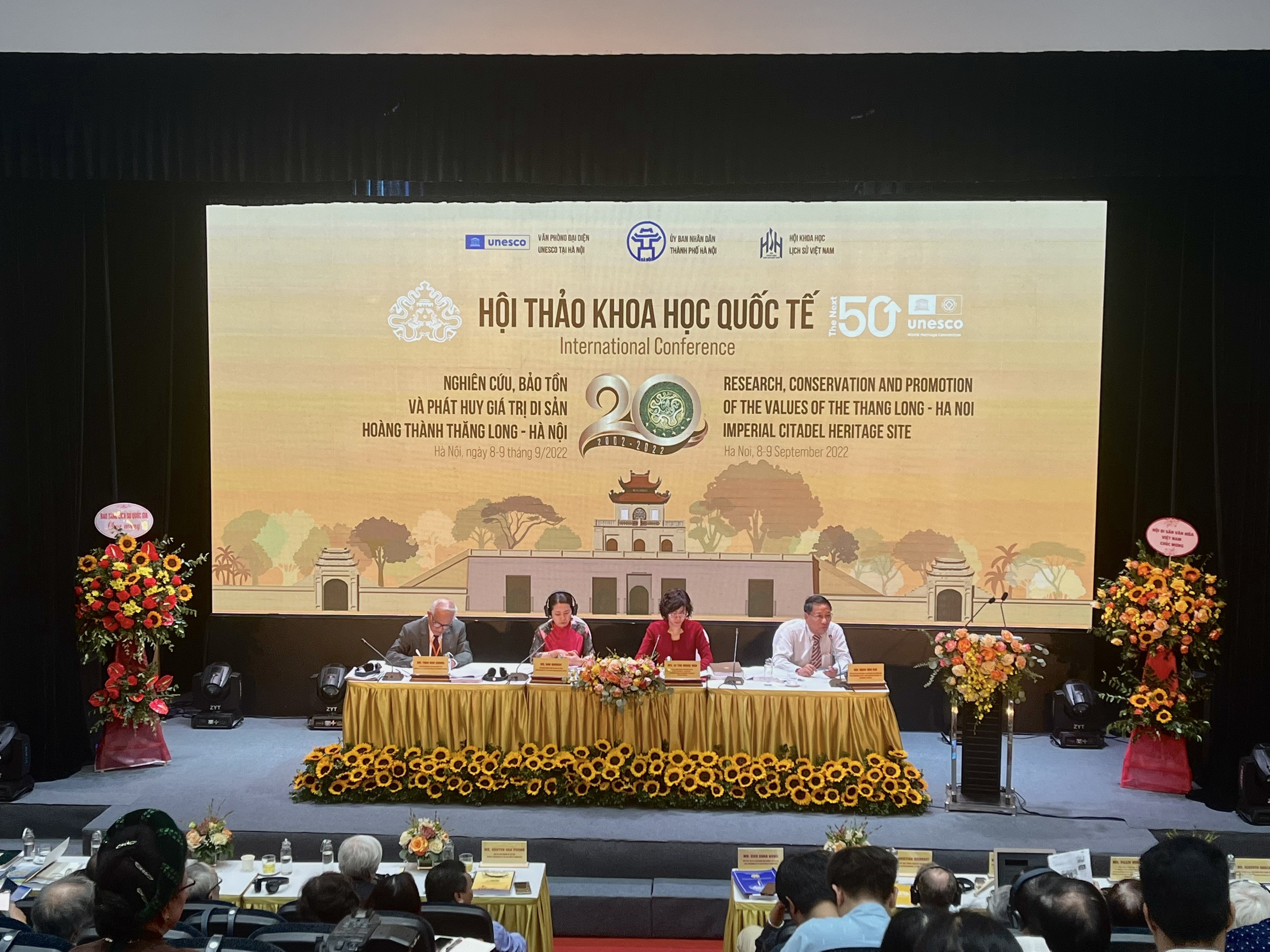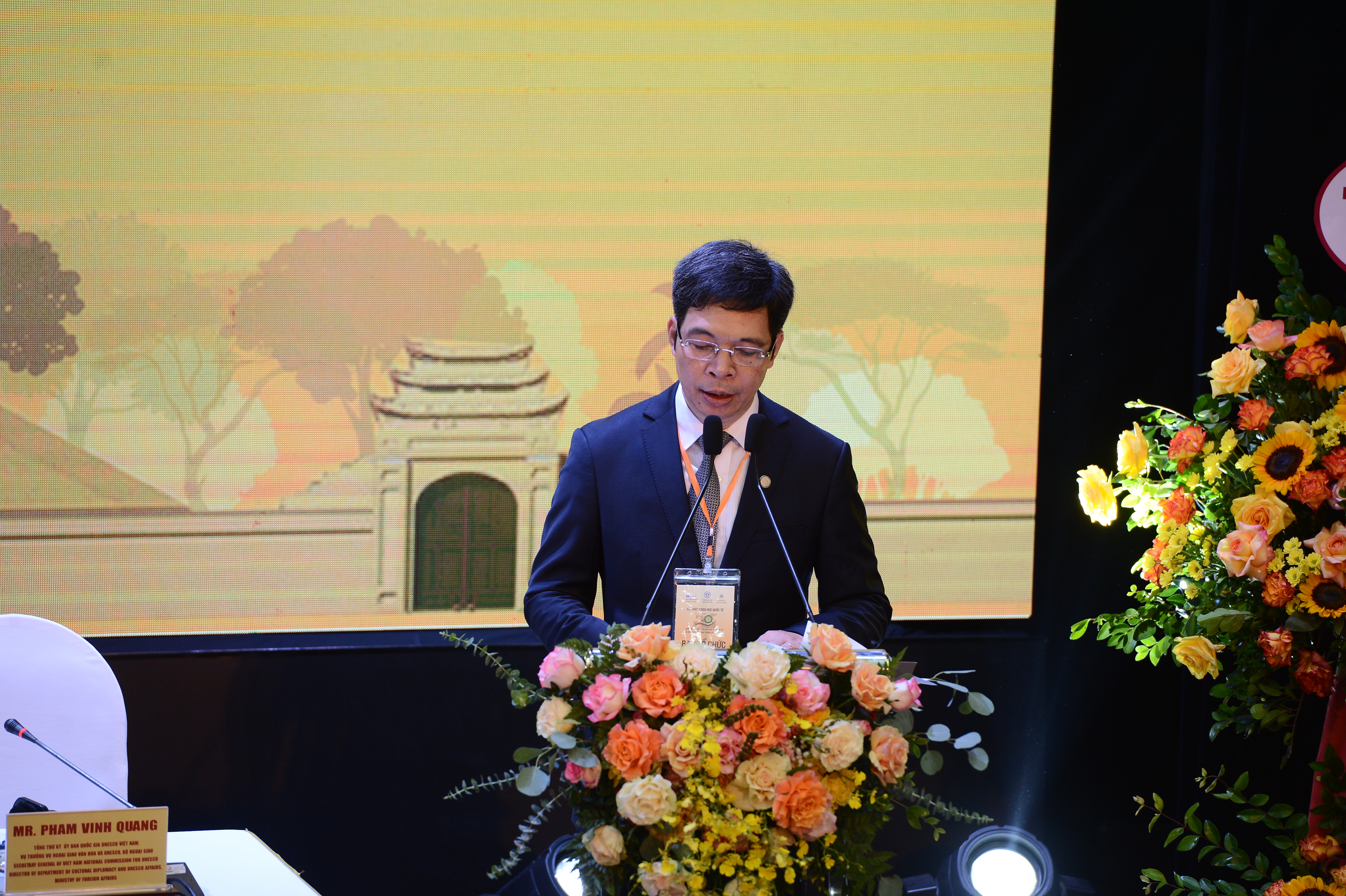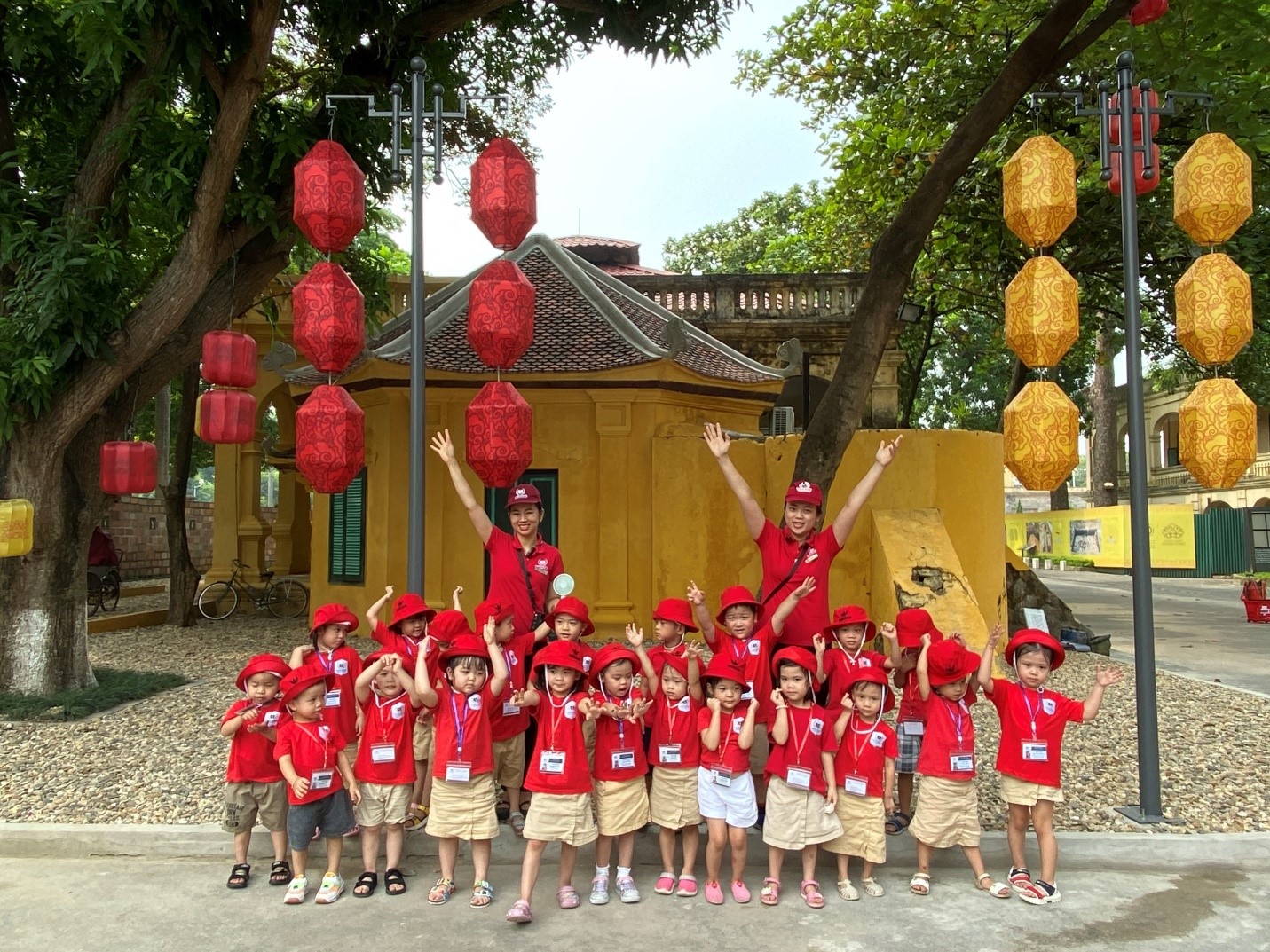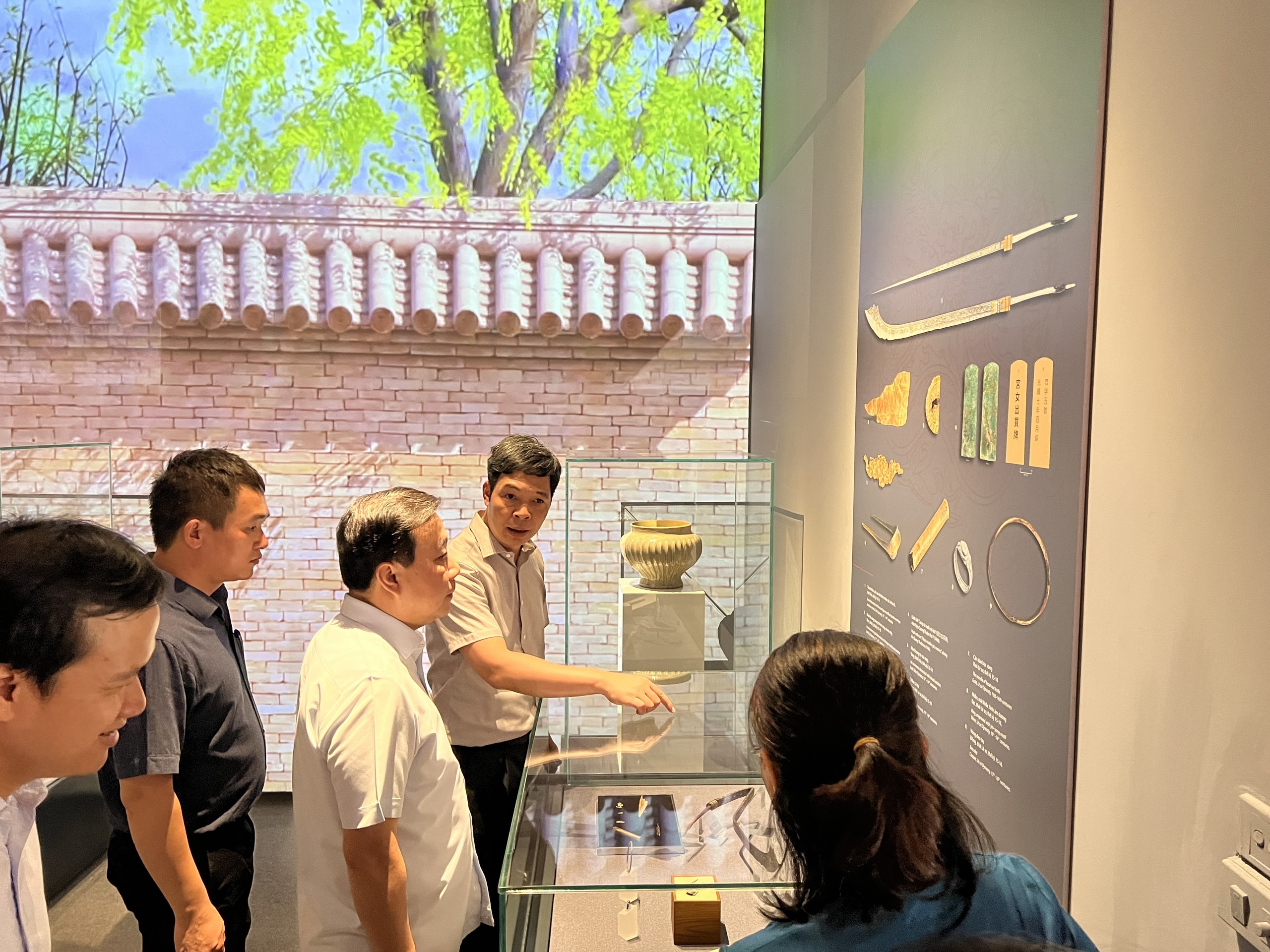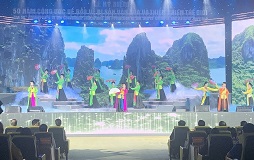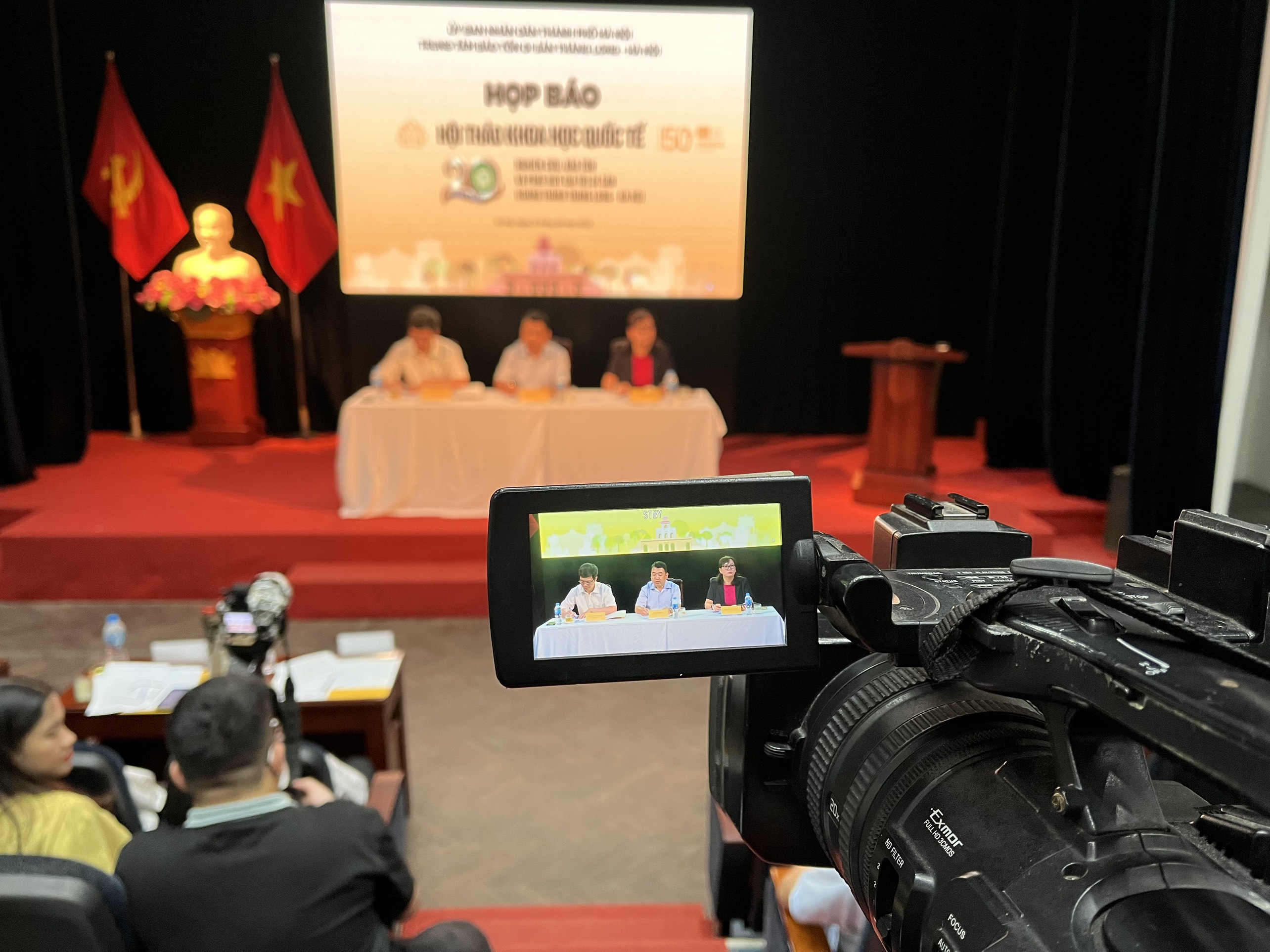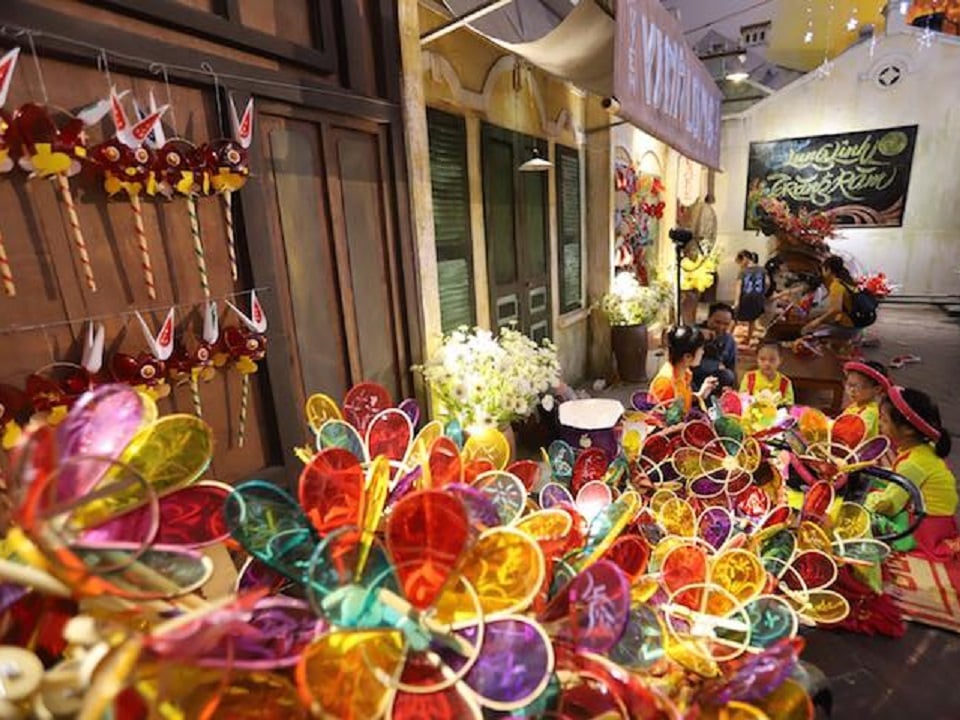The Executive Board discussed the International Conference: "20 years of researching, preserving and promoting the value of the Imperial Citadel of Thang Long - Hanoi" on the morning of September 8, 2022:
1. Assoc. Prof. Dr. Tran Duc Cuong, Chairman of the Vietnam Historical Science Association - Vice Chairman of the Scientific Advisory Council for Research in Co Loa relic site - Hanoi's ancient citadel;
2. Assoc. Prof. Dr. Tong Trung Tin - Chairman of the Vietnam Archaeological Association - Member of the Scientific Advisory Council for Research in Co Loa relic site - Hanoi's Ancient Citadel.
3 Assoc. Prof. Dr. Dang Van Bai - Vice Chairman of the National Council of Cultural Heritage
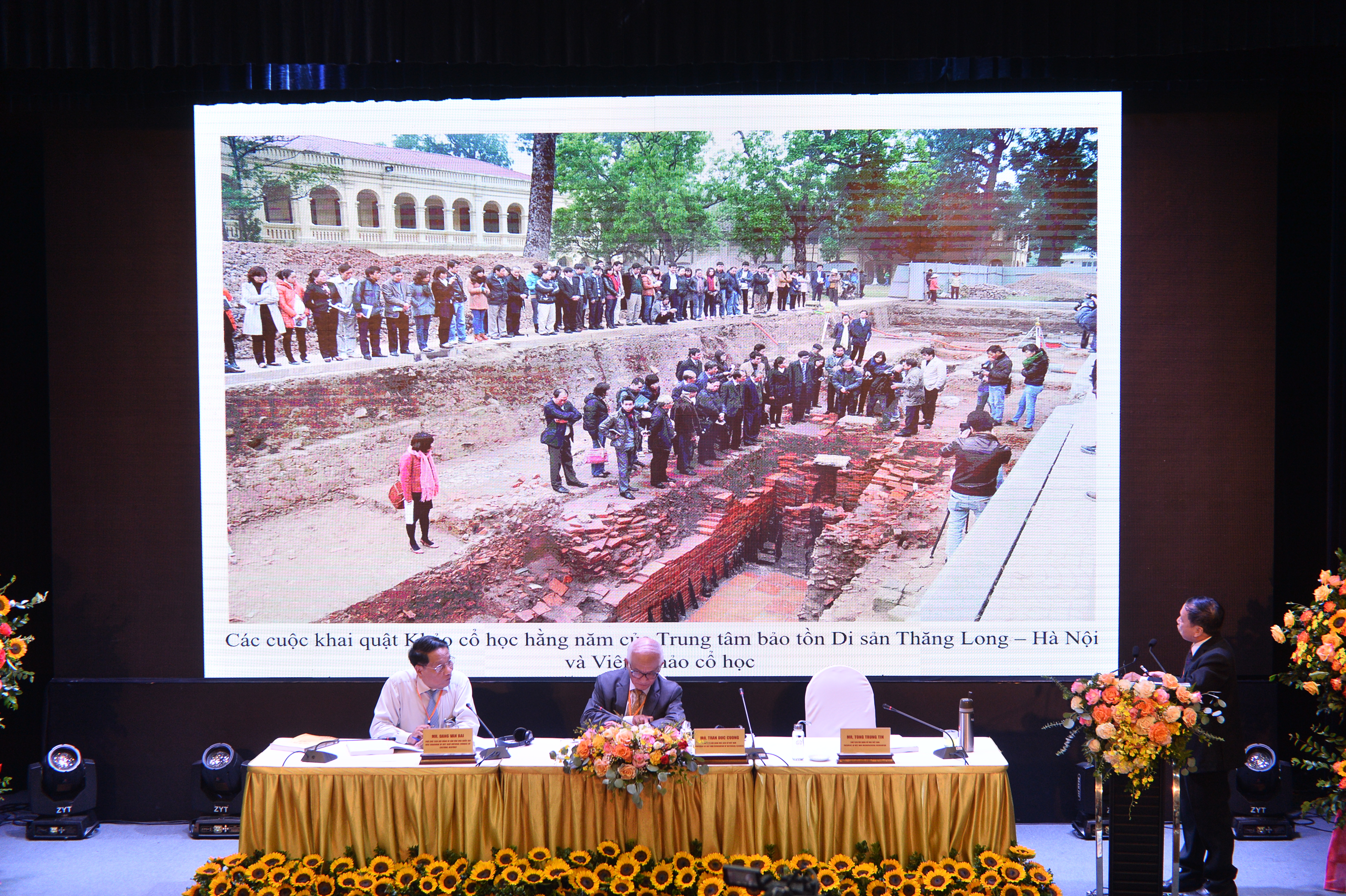
Lecture by Professor Tong Trung Tin
Overview of the results of 20 years of archeology of Thang Long capital (2002-2022) and 10 years of archeology in the main space of Kinh Thien Palace (2011 - 2022)
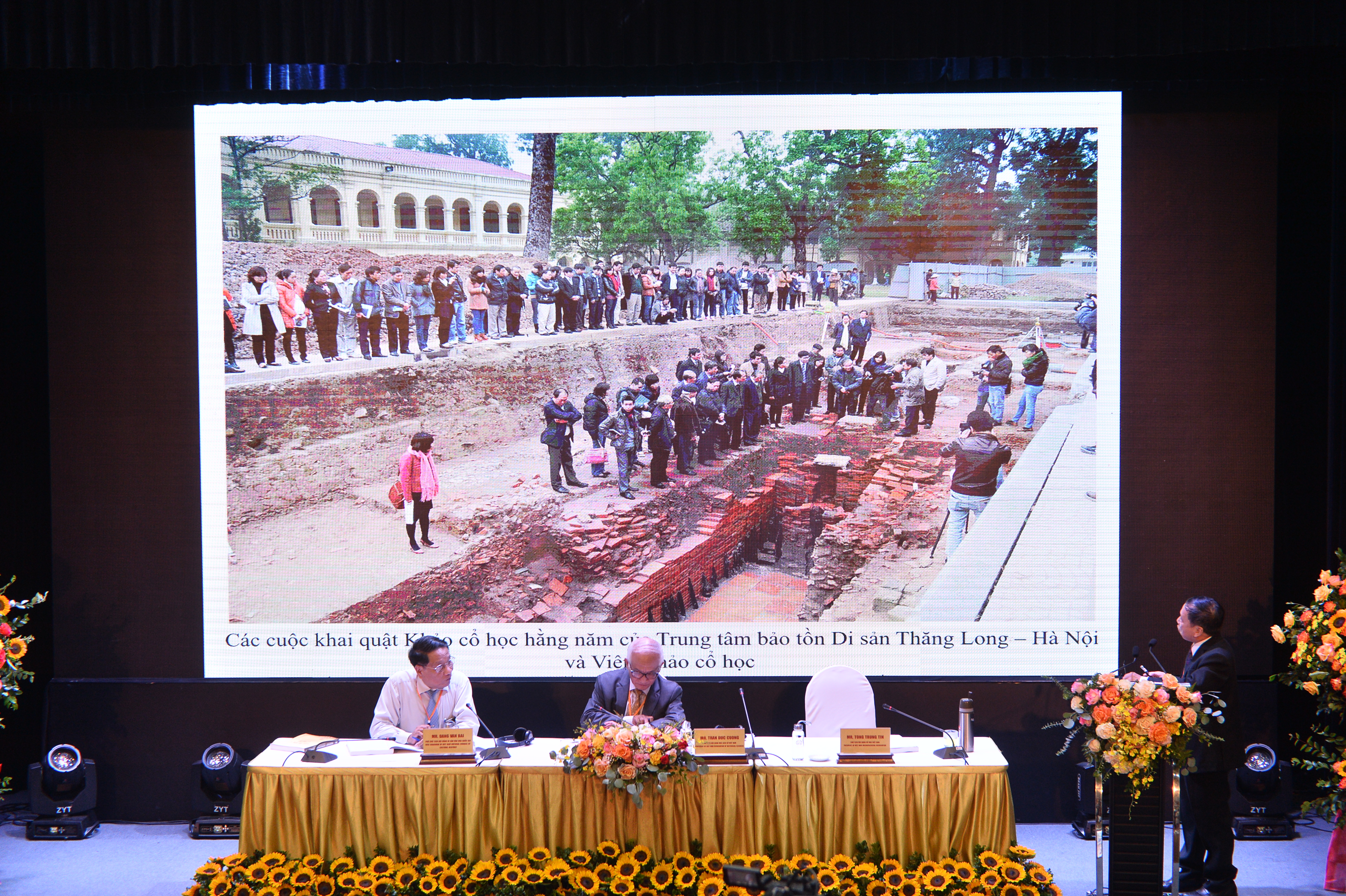
Presentation by Dr. Nguyen Van Son - Hanoi Historical Society
Kinh Thien Palace is the most important architecture of Thang Long capital in the early Le, Mac and Le Trung Hung dynasties, built in 1428 during the reign of King Le Thai To, where Emperor Dai Viet was located. Here, the Emperor held great ceremonies of the court such as enthronement ceremony, court setting, national affairs discussion, telephony, declaration of victory, reception of ambassadors... Therefore, Kinh Thien Palace is the highest symbol of Dai Viet's national power throughout 4 centuries (XV - XVIII).
In 1816, King Gia Long demolished Kinh Thien Palace with the reason that "the architecture was rotten and could not be repaired" and built a new palace called Hanh Palace, in 1841 King Tu Duc changed it to Long Thien Palace. . Experiencing ups and downs in history, the architecture has been completely destroyed, leaving only the base area more than 2m high and two sets of stone railings in the middle of the South and Northwest corners. Surveys and excavations here since 2011 have opened up new understandings about Kinh Thien main hall and Kinh Thien palace space through a system of relics and relics. However, the plan structure and architectural division of Kinh Thien Palace is still a big question that has not been satisfactorily answered.
In this article, we base on historical sources to study the construction process, foundation structure and architectural division of the main halls of the Ly, Tran, Ho, Le (Lam Kinh) and Nguyen dynasties since then. provide a research direction to learn about the structure of Kinh Thien Palace. The research results make a small contribution towards the study and restoration of Kinh Thien main hall and the space of Kinh Thien main hall of the Le dynasty in the World Heritage site of Imperial Citadel of Thang Long - Hanoi.
Presentation by Mr. Nguyen Quang Ngoc - Head of the Department of Culture and Cultural History of Vietnam
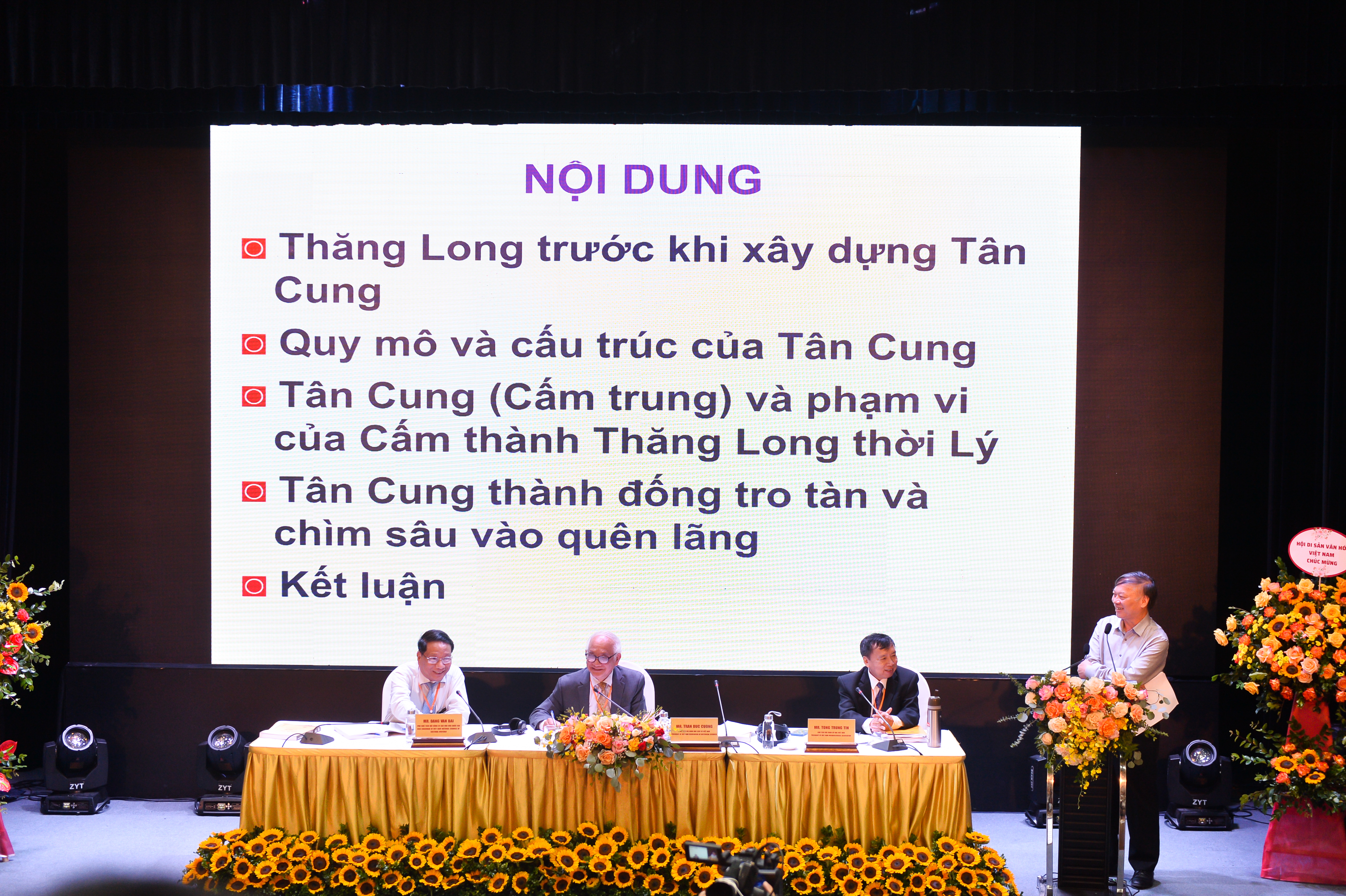
Archaeological excavation results at 18 Hoang Dieu have initially deciphered many mysteries in Thang Long Forbidden Citadel, including Tan Cung.
The New Palace (or Forbidden City) is not the entire Forbidden Citadel of Thang Long, but only a small part inside the Northwest part of the Forbidden Citadel.
The identification of the New Palace at the beginning of XIII is that there is more scientific basis to determine the unchanged thousand-year-old position of the main halls of Can Nguyen - Thien An - Kinh Thien, along with the main axis of the Forbidden Citadel of Thang Long in the south. East, right next to Tan Cung.
Lecture by Mr. Olivier Tessier
Overview of the history of the Imperial Citadel of Thang Long - Hanoi in the 19th century narrated from Vietnamese and Western sources
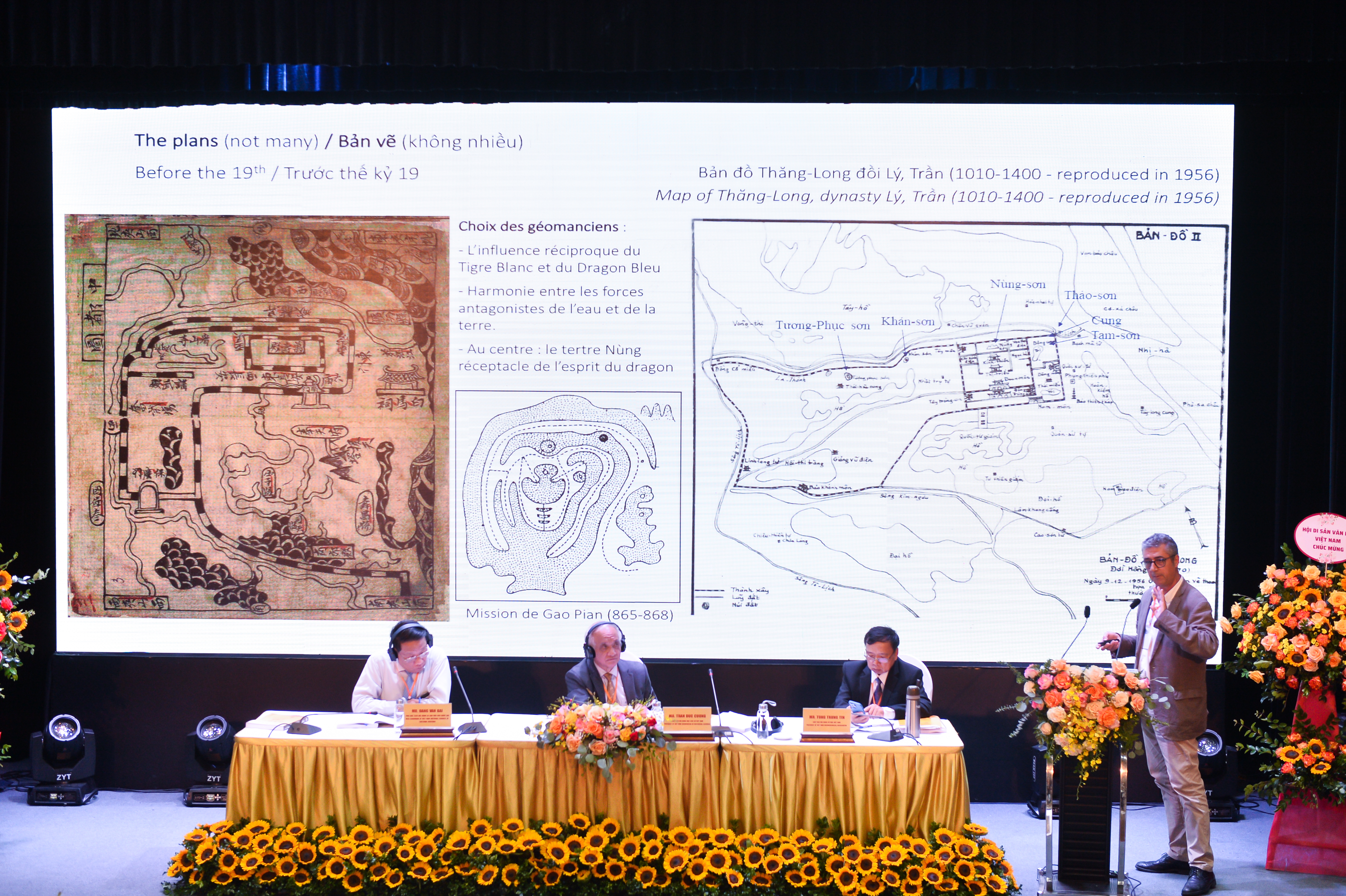
With the enthronement of Emperor Gia Long in 1802 and the transfer of the capital of the united country to Hue, Thang Long – Hanoi lost its status as a political center and could no longer own the Imperial Citadel or the Forbidden Citadel. . Instead, a new citadel inspired by Vauban's fortification principles was built. This first urban landscape change forms the starting point for the path we propose to follow by tracing the major transformations made by successive Nguyen emperors to the ancient Imperial Citadel of Thang Long. in order to remove the characteristics of heaven and earth, symbolizing kingship. To do this, two main sources were mobilized and cross-referenced: an annals and royal histories written in the nineteenth century and a series of city drawings, in particular, detailed drawings in the “style” from Europe” between 1821 and 1831.
Colonial intervention hastened this process of de-sanctification and put an end to it. For fifteen years, from the second capture of the citadel led by Henri Rivière in 1882 to the dismantling of the ramparts, completed in 1897, the country's new owners vehemently demolished buildings for the Officials and functional buildings for inner-city living (shops, barracks, etc.) were replaced by buildings with military and mundane purposes. All these voluntary actions are part of the logic of realizing colonial institutions in urban space based on the negation of the historical value and identity that the citadel embodies. Here, the available source material is more diverse and incorporates documents from the French civil and military archives, travel records, chronology of the citadel and photographs.
Thesis of MSc. Do Duc Tue - Thang Long Heritage Conservation Center - Hanoi
Identifying the architecture of the palace of the Le Dynasty through the typical relics discovered at the Imperial Citadel of Thang Long
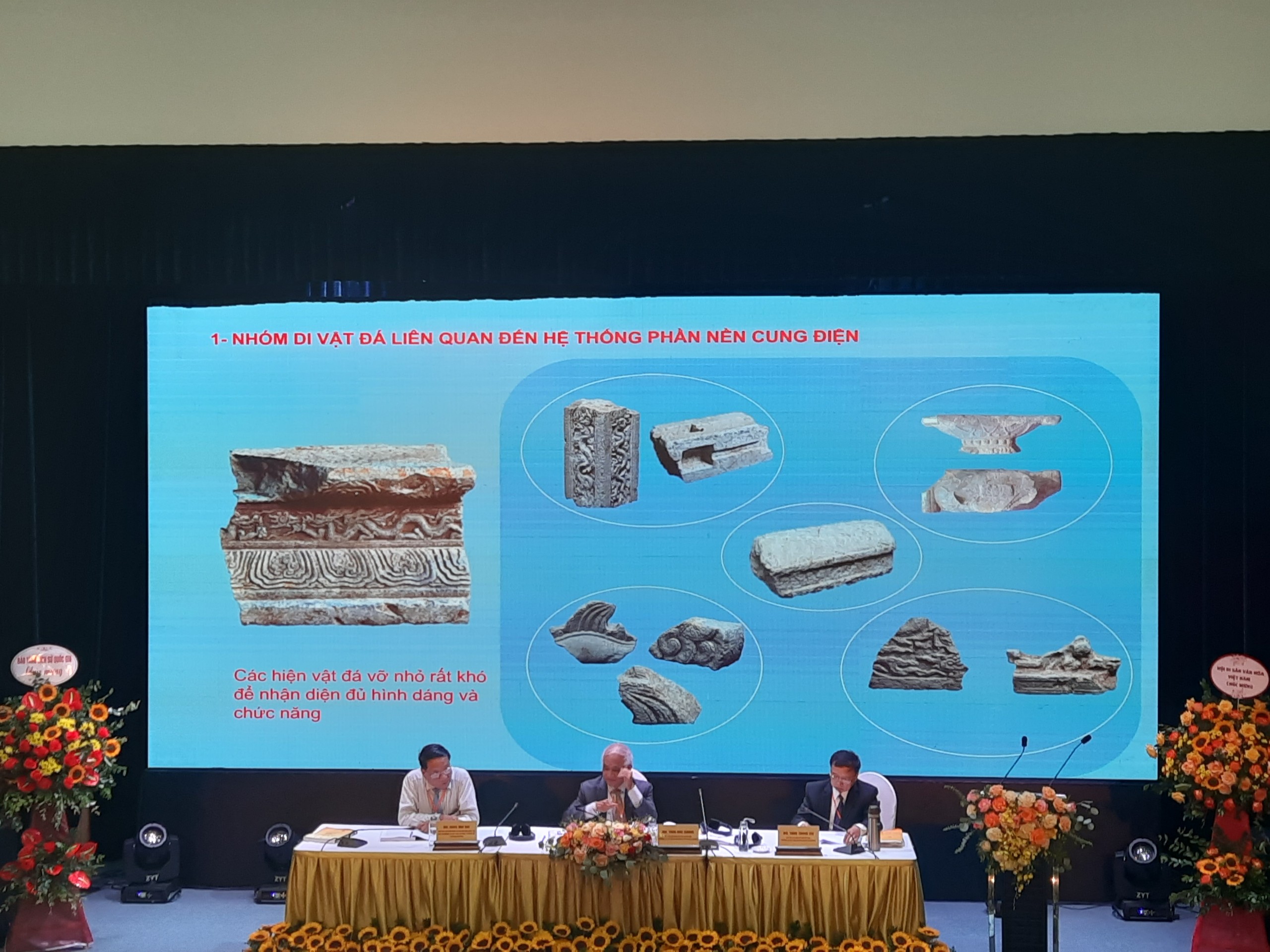
Presentation of Dr. Pham Le Huy - Faculty of Dong Phuong, University of Social Sciences and Humanities
Planning of Thang Long capital under Ly Dynasty - The center of Dai Viet's world seen from the East Asian context
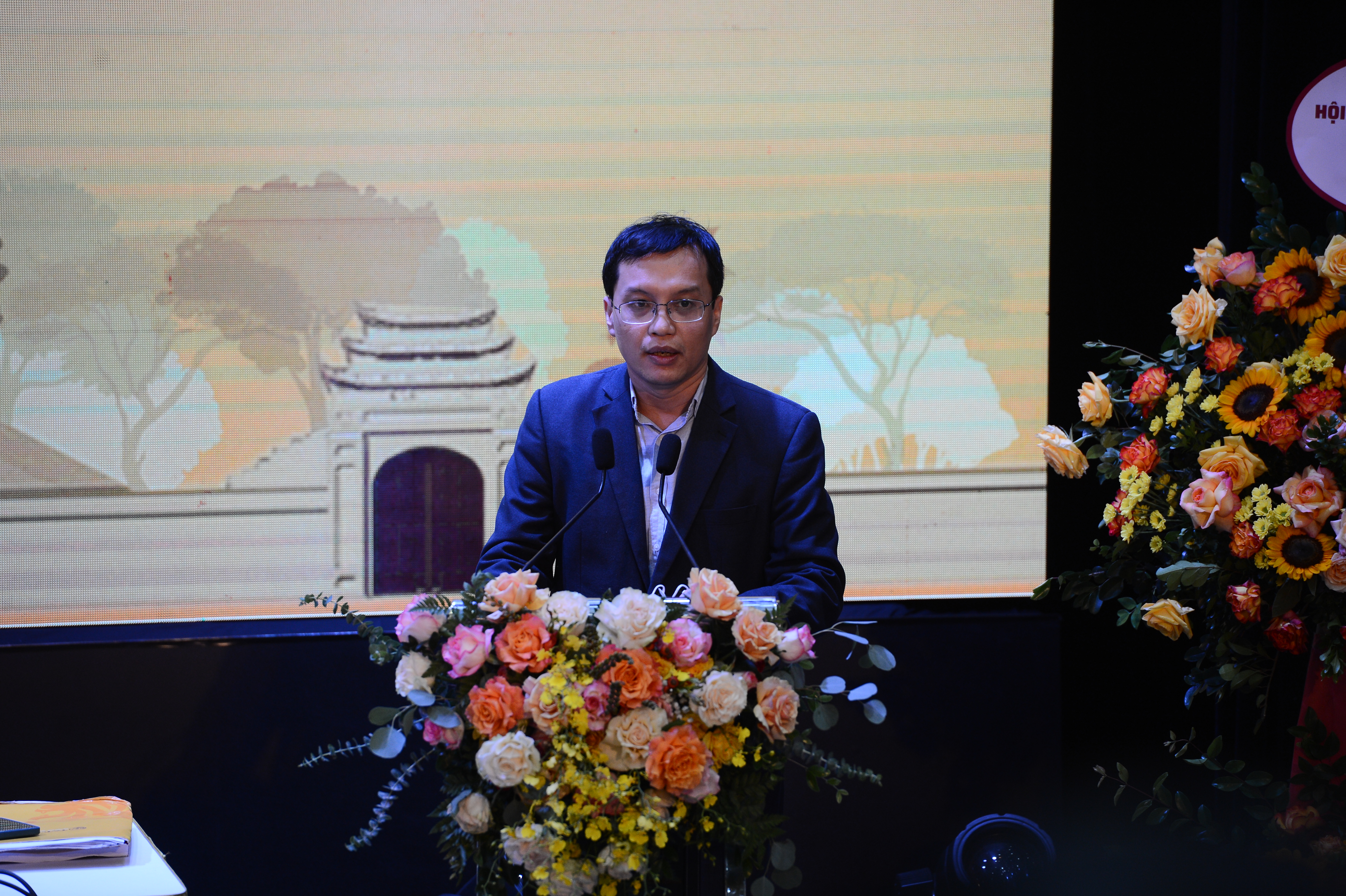
The Executive Board discussed the International Conference: "20 years of researching, preserving and promoting the value of the Imperial Citadel of Thang Long - Hanoi" on the afternoon of September 8, 2022:
1. Assoc. Prof. Dr. Tran Duc Cuong, Chairman of the Vietnam Historical Science Association - Vice Chairman of the Scientific Advisory Council for Research in Co Loa relic site - Hanoi's ancient citadel;
2. Assoc. Prof. Dr. Tong Trung Tin - Chairman of the Vietnam Archaeological Association - Member of the Scientific Advisory Council for Research in Co Loa relic site - Hanoi's Ancient Citadel.
3 Mr. Christian Manhart - Head of Unesco Representative Office in Vietnam
Presentation of Ms. Marie Laure Lavenir - President of the International Council of Monuments and Sites ICOMOS
Principles of Authenticity of the Heritage and Charter of Venice
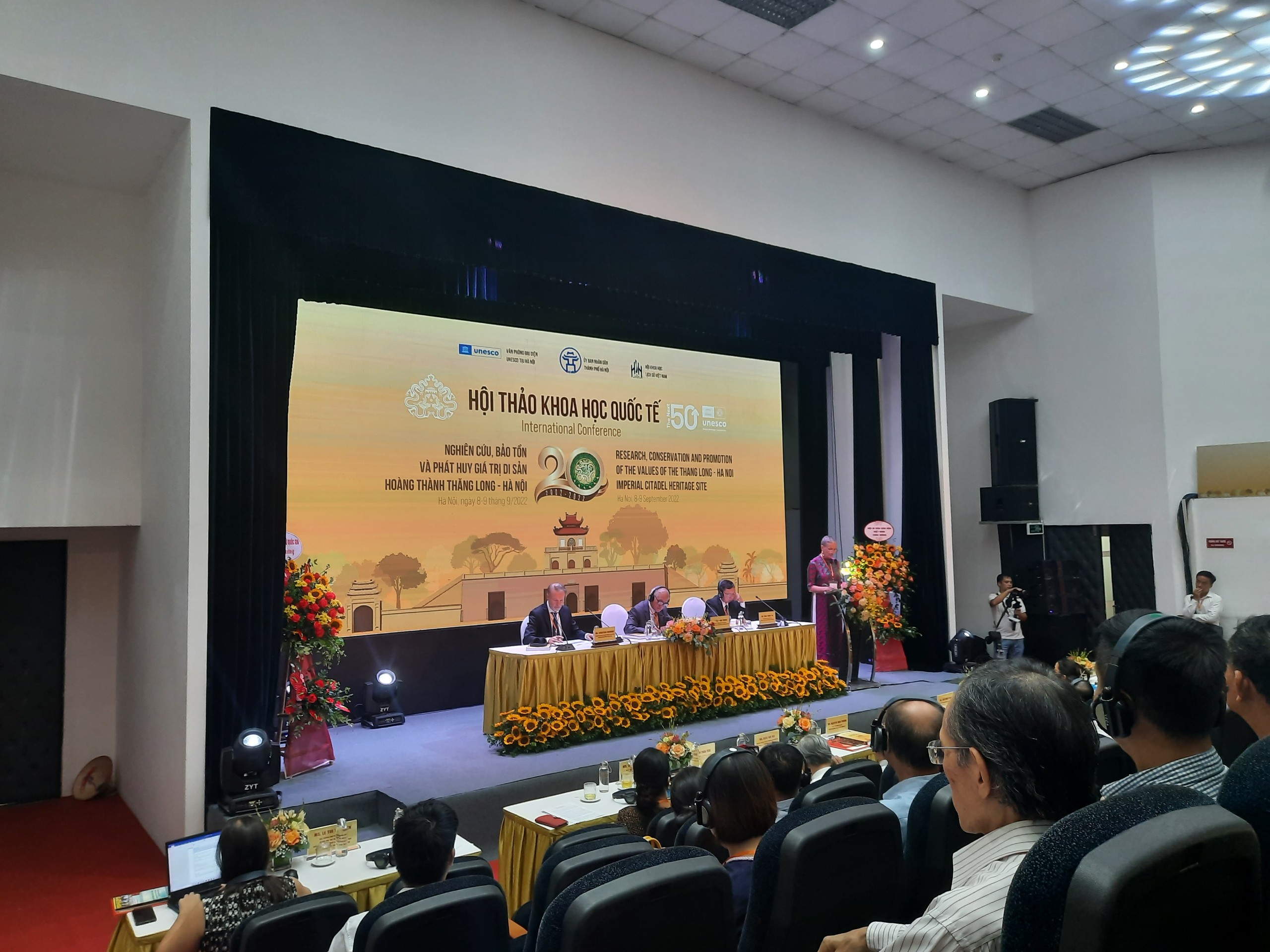
Online lecture of GS. Robin Conningham
The role of archeology in conservation and restoration of archaeological sites in heritage and history awareness in Asia.
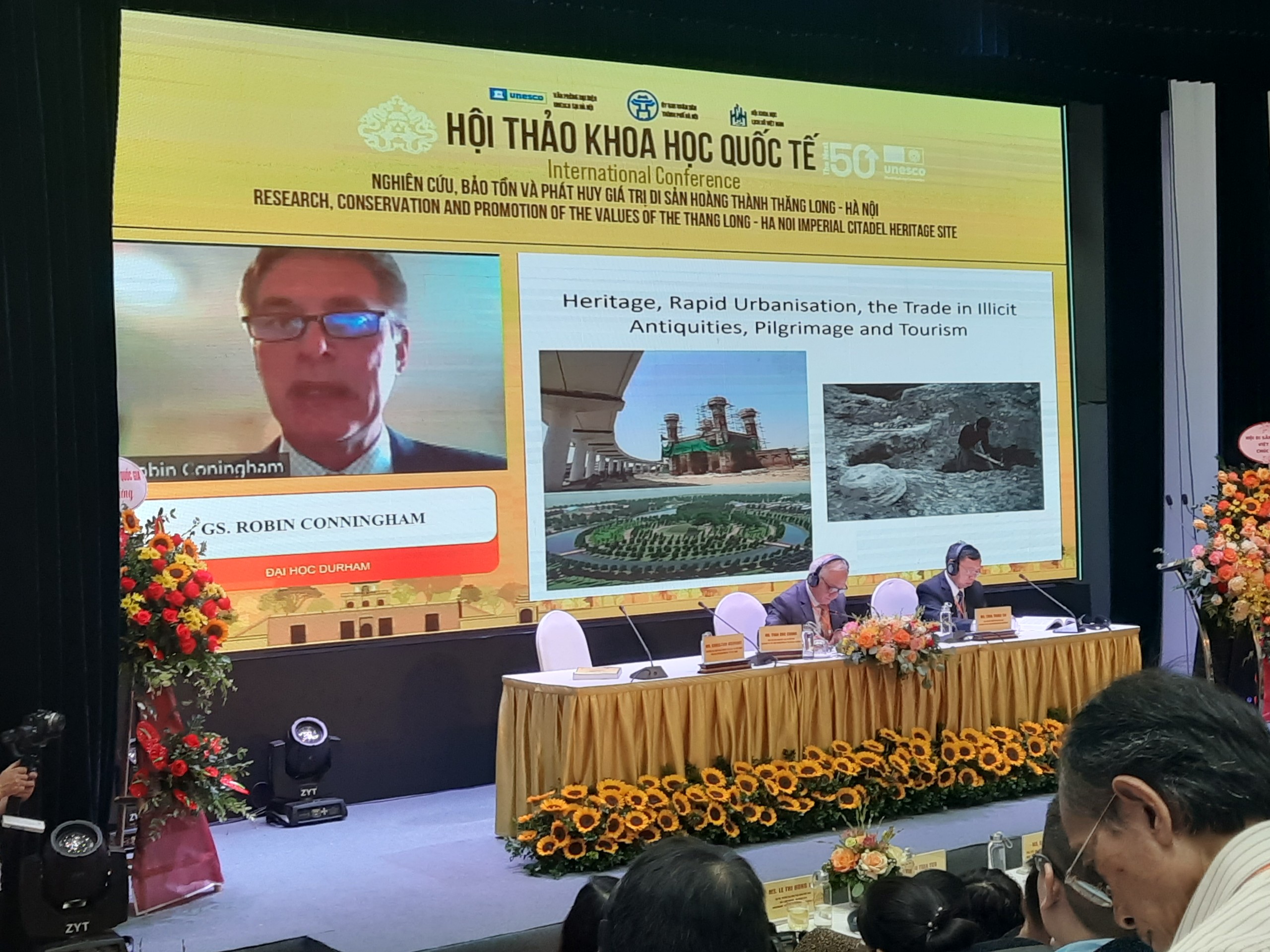
Presentation of Dr. Phan Thanh Hai - Director of Thua Thien Hue Department of Culture, Sports and Tourism
Some suggestions from the relationship between Thai Hoa Palace and Can Chanh Palace in Hue capital of the Nguyen Dynasty from the perspective of ceremonial space layout
Speech of Deputy Head of Ho Dynasty Citadel Relic Management Board
Results of archaeological research on the Ho Dynasty citadel and comparison with archaeological remains at Thang Long Imperial Citadel - Hanoi
Thesis of MSc. Nguyen Viet Trong - Lecturer at National Economics University
Dr. Nguyen Viet Chuc - Former Vice Chairman of the National Assembly Education and Culture Committee
Restoring the Quang Chieu Lantern Festival to develop tourism in the Imperial Citadel of Thang Long
Comment of Mr. Emmanuel Cerise - Director of PRX Vietnam (representative of the Ile de France Region) in Hanoi
Proposing models and planning of archeological and architectural exhibition space for the Imperial Citadel of Thang Long and Hanoi, opportunities for cooperation between Hanoi and the Ile de France region
1. Assoc. Prof. Dr. Tran Duc Cuong, Chairman of the Vietnam Historical Science Association - Vice Chairman of the Scientific Advisory Council for Research in Co Loa relic site - Hanoi's ancient citadel;
2. Assoc. Prof. Dr. Tong Trung Tin - Chairman of the Vietnam Archaeological Association - Member of the Scientific Advisory Council for Research in Co Loa relic site - Hanoi's Ancient Citadel.
3 Assoc. Prof. Dr. Dang Van Bai - Vice Chairman of the National Council of Cultural Heritage

Lecture by Professor Tong Trung Tin
Overview of the results of 20 years of archeology of Thang Long capital (2002-2022) and 10 years of archeology in the main space of Kinh Thien Palace (2011 - 2022)

Presentation by Dr. Nguyen Van Son - Hanoi Historical Society
Kinh Thien Palace is the most important architecture of Thang Long capital in the early Le, Mac and Le Trung Hung dynasties, built in 1428 during the reign of King Le Thai To, where Emperor Dai Viet was located. Here, the Emperor held great ceremonies of the court such as enthronement ceremony, court setting, national affairs discussion, telephony, declaration of victory, reception of ambassadors... Therefore, Kinh Thien Palace is the highest symbol of Dai Viet's national power throughout 4 centuries (XV - XVIII).
In 1816, King Gia Long demolished Kinh Thien Palace with the reason that "the architecture was rotten and could not be repaired" and built a new palace called Hanh Palace, in 1841 King Tu Duc changed it to Long Thien Palace. . Experiencing ups and downs in history, the architecture has been completely destroyed, leaving only the base area more than 2m high and two sets of stone railings in the middle of the South and Northwest corners. Surveys and excavations here since 2011 have opened up new understandings about Kinh Thien main hall and Kinh Thien palace space through a system of relics and relics. However, the plan structure and architectural division of Kinh Thien Palace is still a big question that has not been satisfactorily answered.
In this article, we base on historical sources to study the construction process, foundation structure and architectural division of the main halls of the Ly, Tran, Ho, Le (Lam Kinh) and Nguyen dynasties since then. provide a research direction to learn about the structure of Kinh Thien Palace. The research results make a small contribution towards the study and restoration of Kinh Thien main hall and the space of Kinh Thien main hall of the Le dynasty in the World Heritage site of Imperial Citadel of Thang Long - Hanoi.
Presentation by Mr. Nguyen Quang Ngoc - Head of the Department of Culture and Cultural History of Vietnam

Archaeological excavation results at 18 Hoang Dieu have initially deciphered many mysteries in Thang Long Forbidden Citadel, including Tan Cung.
The New Palace (or Forbidden City) is not the entire Forbidden Citadel of Thang Long, but only a small part inside the Northwest part of the Forbidden Citadel.
The identification of the New Palace at the beginning of XIII is that there is more scientific basis to determine the unchanged thousand-year-old position of the main halls of Can Nguyen - Thien An - Kinh Thien, along with the main axis of the Forbidden Citadel of Thang Long in the south. East, right next to Tan Cung.
Lecture by Mr. Olivier Tessier
Overview of the history of the Imperial Citadel of Thang Long - Hanoi in the 19th century narrated from Vietnamese and Western sources

With the enthronement of Emperor Gia Long in 1802 and the transfer of the capital of the united country to Hue, Thang Long – Hanoi lost its status as a political center and could no longer own the Imperial Citadel or the Forbidden Citadel. . Instead, a new citadel inspired by Vauban's fortification principles was built. This first urban landscape change forms the starting point for the path we propose to follow by tracing the major transformations made by successive Nguyen emperors to the ancient Imperial Citadel of Thang Long. in order to remove the characteristics of heaven and earth, symbolizing kingship. To do this, two main sources were mobilized and cross-referenced: an annals and royal histories written in the nineteenth century and a series of city drawings, in particular, detailed drawings in the “style” from Europe” between 1821 and 1831.
Colonial intervention hastened this process of de-sanctification and put an end to it. For fifteen years, from the second capture of the citadel led by Henri Rivière in 1882 to the dismantling of the ramparts, completed in 1897, the country's new owners vehemently demolished buildings for the Officials and functional buildings for inner-city living (shops, barracks, etc.) were replaced by buildings with military and mundane purposes. All these voluntary actions are part of the logic of realizing colonial institutions in urban space based on the negation of the historical value and identity that the citadel embodies. Here, the available source material is more diverse and incorporates documents from the French civil and military archives, travel records, chronology of the citadel and photographs.
Thesis of MSc. Do Duc Tue - Thang Long Heritage Conservation Center - Hanoi
Identifying the architecture of the palace of the Le Dynasty through the typical relics discovered at the Imperial Citadel of Thang Long

Presentation of Dr. Pham Le Huy - Faculty of Dong Phuong, University of Social Sciences and Humanities
Planning of Thang Long capital under Ly Dynasty - The center of Dai Viet's world seen from the East Asian context

The Executive Board discussed the International Conference: "20 years of researching, preserving and promoting the value of the Imperial Citadel of Thang Long - Hanoi" on the afternoon of September 8, 2022:
1. Assoc. Prof. Dr. Tran Duc Cuong, Chairman of the Vietnam Historical Science Association - Vice Chairman of the Scientific Advisory Council for Research in Co Loa relic site - Hanoi's ancient citadel;
2. Assoc. Prof. Dr. Tong Trung Tin - Chairman of the Vietnam Archaeological Association - Member of the Scientific Advisory Council for Research in Co Loa relic site - Hanoi's Ancient Citadel.
3 Mr. Christian Manhart - Head of Unesco Representative Office in Vietnam
Presentation of Ms. Marie Laure Lavenir - President of the International Council of Monuments and Sites ICOMOS
Principles of Authenticity of the Heritage and Charter of Venice

Online lecture of GS. Robin Conningham
The role of archeology in conservation and restoration of archaeological sites in heritage and history awareness in Asia.

Presentation of Dr. Phan Thanh Hai - Director of Thua Thien Hue Department of Culture, Sports and Tourism
Some suggestions from the relationship between Thai Hoa Palace and Can Chanh Palace in Hue capital of the Nguyen Dynasty from the perspective of ceremonial space layout
Speech of Deputy Head of Ho Dynasty Citadel Relic Management Board
Results of archaeological research on the Ho Dynasty citadel and comparison with archaeological remains at Thang Long Imperial Citadel - Hanoi
Thesis of MSc. Nguyen Viet Trong - Lecturer at National Economics University
Dr. Nguyen Viet Chuc - Former Vice Chairman of the National Assembly Education and Culture Committee
Restoring the Quang Chieu Lantern Festival to develop tourism in the Imperial Citadel of Thang Long
Comment of Mr. Emmanuel Cerise - Director of PRX Vietnam (representative of the Ile de France Region) in Hanoi
Proposing models and planning of archeological and architectural exhibition space for the Imperial Citadel of Thang Long and Hanoi, opportunities for cooperation between Hanoi and the Ile de France region
Top







